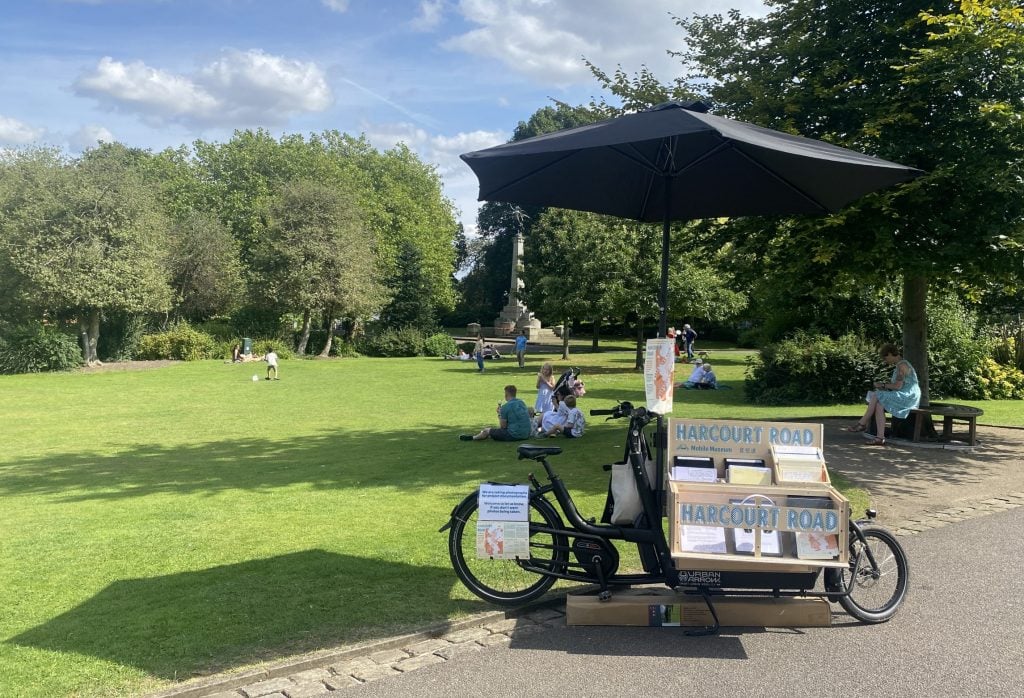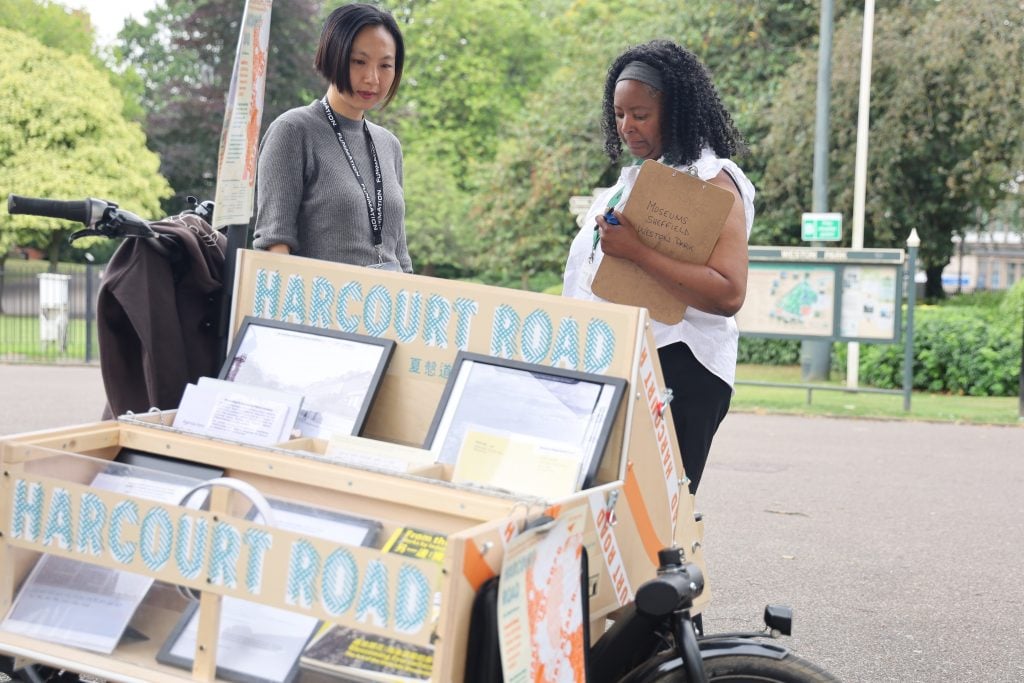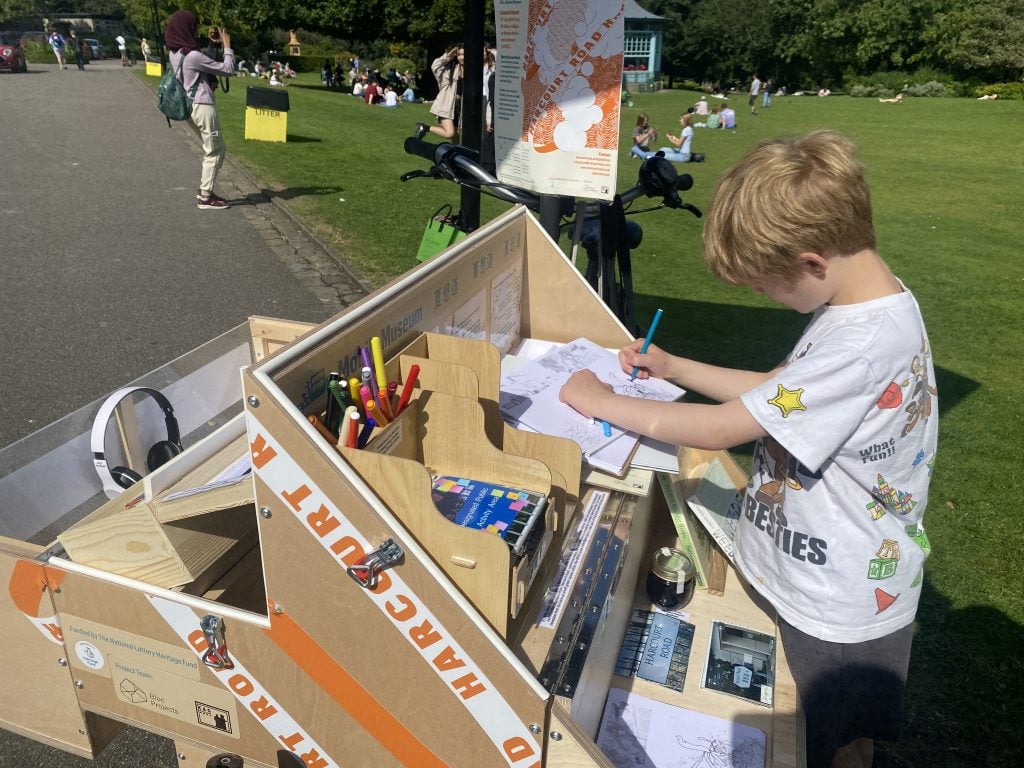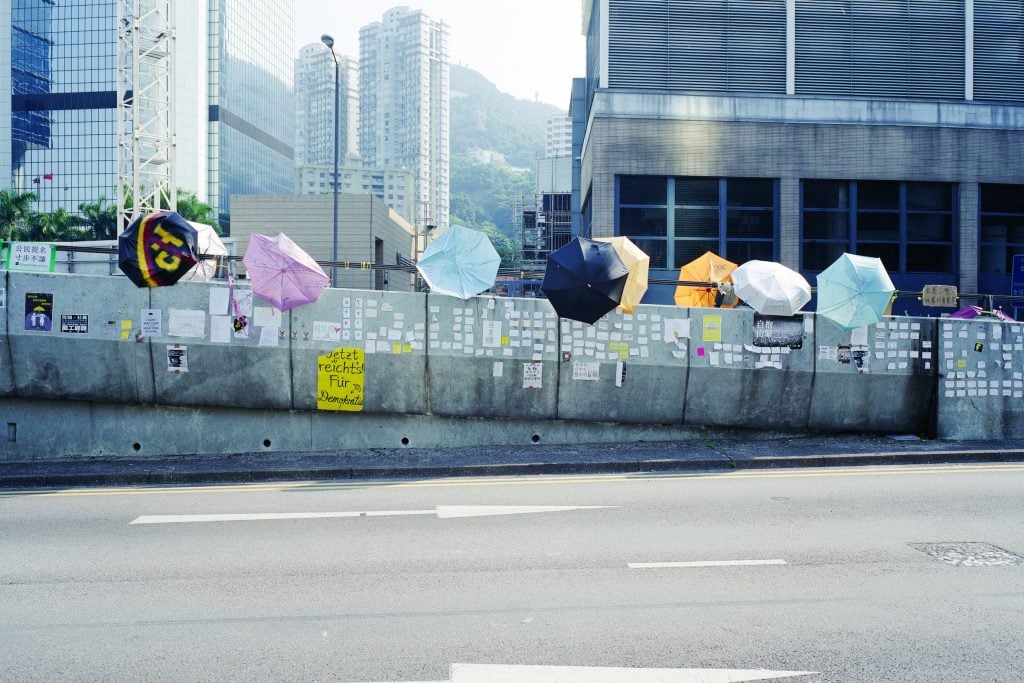Art & Exhibitions
Two Artists Explore Parallel Histories of Resistance in the U.K. and Hong Kong
The exhibition of the community art project initiated by Hong Kong migrant artists marks the 10th anniversary of the city's Umbrella Movement.

The exhibition of the community art project initiated by Hong Kong migrant artists marks the 10th anniversary of the city's Umbrella Movement.

Vivienne Chow

To most people, Harcourt Road is a normal street name. But for the people of Hong Kong and those living in the English city of Sheffield, this road existing in these two places carries the weight of parallel histories of resistance despite the fact that they are 6,000 miles apart from each other.
Uncovering these ties are Sheffield-based Hong Kong artist duo C&G Artpartment, formed by Clara Cheung and Gum Cheng. Through their expansive community art project, Harcourt Road, in collaboration with local art space Bloc Projects, the pair has been working on matching streets in the two cities that share the same names. In 2023, they narrowed down the focus of the project to just Harcourt Road, comparing the histories of the residential street in Sheffield and the Hong Kong thoroughfare that has played host to major social movements of the past decade.
“To me, and a lot of people from Hong Kong, Harcourt Road is a significant street full of memories,” said Cheung, an artist, curator, and former elected District Councillor who emigrated from Hong Kong to the U.K. in 2021. “Harcourt Road in Sheffield plays a pivotal role in the area’s grassroots activism and local democracy. On many occasions, the residents stood up for themselves and fought for justice in their community.”

Clara Cheung of C&G Artpartment (left) explains to a local resident about the parallel histories of Harcourt Road in Sheffield and Hong Kong. Courtesy of the artists.
On September 28, the project enters a new stage of development with the opening of the exhibition “Harcourt Road” at Bloc Projects, with a grant of £47,930 ($64,143) from the National Lottery Heritage Fund. The show’s opening date coincides with the 10th anniversary of Hong Kong’s Umbrella Movement, which saw pro-democracy protests erupt in Hong Kong in September 2014 after Beijing shot down the city’s proposal for a political reform that would allow its leaders to be elected in universal suffrage, as promised in the city’s mini-constitution. The protests at the time were largely peaceful. Demonstrators occupied Harcourt Road, a major highway in the city’s Admiralty neighborhood that connects Central and Wan Chai, with camping tents and makeshift structures reclaiming the public space that was previously inaccessible to the general public. It evolved into a space for public art and community events.
On September 28, 2014 Police fired 87 rounds of tear gas and pepper spray at the peaceful demonstrators on Harcourt Road. Protesters shielded themselves against tear gas and pepper spray with umbrellas, which became a symbol of resistance. The incident marked the beginning of the Umbrella Movement, also known as Occupy Central, a 79-day demonstration occupying Harcourt Road and the nearby government complex.

A local resident participated in a Harcourt Road Mobile Museum initiative in Sheffield. Courtesy of C&G Artpartment.
Since then, and even more so after Hong Kong’s anti-government protests in 2019–20, when Beijing imposed a sweeping national security law that saw activists, lawmakers, and journalists arrested, many from Hong Kong have sought refuge in the U.K., among them C&G. During their research into the histories of Sheffield’s Harcourt road, Cheung discovered that the little street has witnessed waves of migration throughout the past century—from Irish and Eastern European workers after World War II to Hungarian and Polish migrants in the 1950s, followed by those arriving from the Caribbean and India in the following decade. Today, Hong Kong migrants setting in the U.K. have joined the neighborhood’s diverse community.
The artist duo, as well as their collaborator, Bloc Projects’ co-director Sunshine Wong, are eager to tell the stories that connect these two roads and their respective communities. “The two very different Harcourt Road tell surprisingly similar stories of collectivity: that no matter how large or small the communities, how permanent or temporary, they coalesce whenever there’s a common struggle,” Wong said in a statement.
Earlier in the summer, C&G launched an initiative called Harcourt Road Mobile Museum. An e-bike mounted shelf carrying books, documents, photographs, and drawings related to the two Harcourt Roads. Stationed in various locations around the street and the nearby Weston Park, the duo conducted oral history interviews about their stories and memories of the neighborhood.

Artist Wai Hang Siu’s photography work on Hong Kong’s Umbrella Movement on Harcourt Road, 2014. Courtesy of the artist.
As part of the project, the team also worked with a local photographer to produce a series of portraits of local families and invited residents to color the contour outline drawings of a type of Sheffield-grown wild weed, a symbol of resistance as it cannot be eradicated. More than 100 drawings have been collected and will be compiled in an animated short to be unveiled at the exhibition.
Meanwhile, C&G Artpartment is also presenting “Iron Barricades – Cable Ties – Hope,” a solo exhibition of photography artist Wai Hang Siu, who also emigrated to the U.K. from Hong Kong. The show will feature Siu’s never-been-shown photographs taken during the 2014 Umbrella Movement at their own art space in Sheffield. The show runs from September 29 through November 2.
“As part of the collective of Hong Kong diaspora, we will not disperse completely, although I cannot tell how things will pan out in the future. We do what we can do now, and focus on the present,” Cheung said.